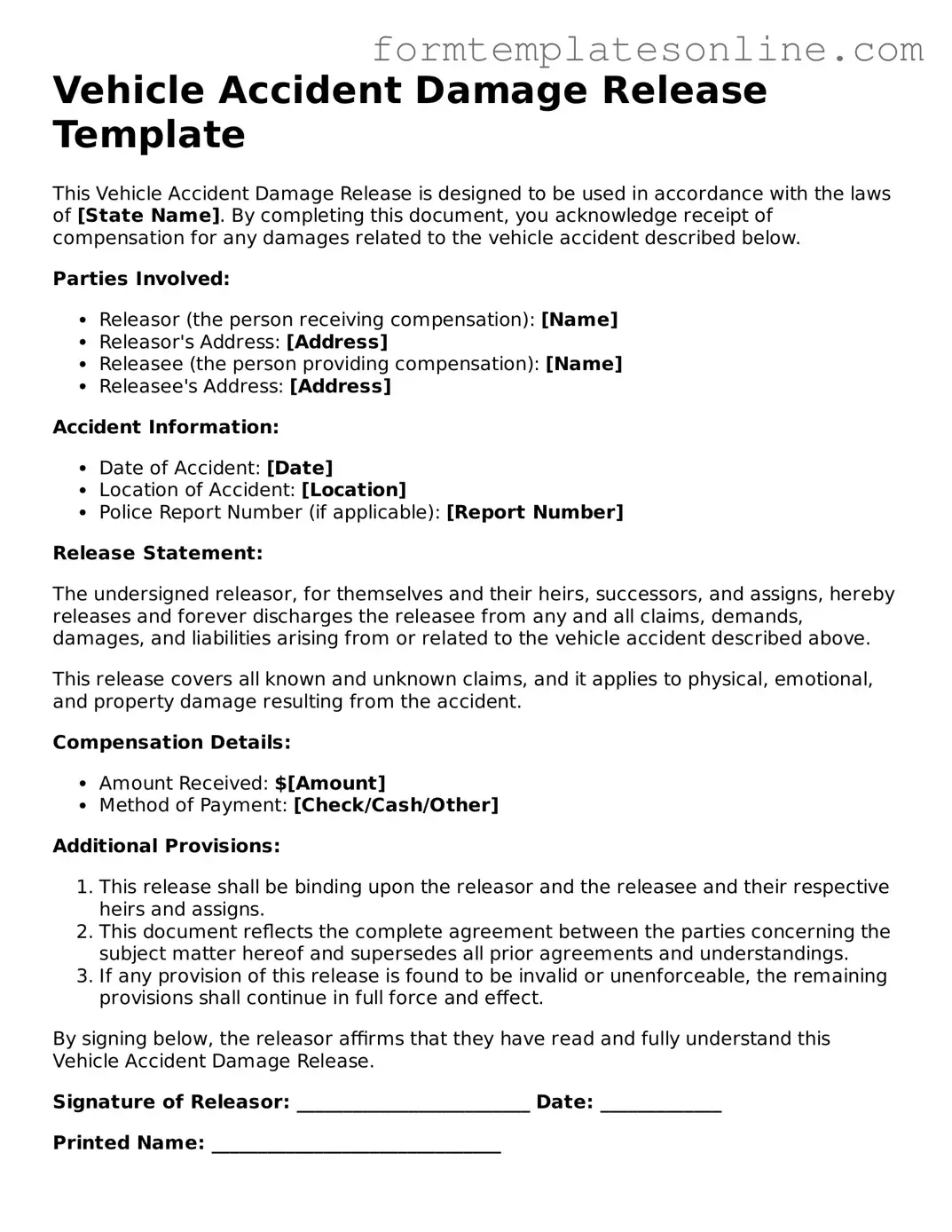Vehicle Accident Damage Release Template
This Vehicle Accident Damage Release is designed to be used in accordance with the laws of [State Name]. By completing this document, you acknowledge receipt of compensation for any damages related to the vehicle accident described below.
Parties Involved:
- Releasor (the person receiving compensation): [Name]
- Releasor's Address: [Address]
- Releasee (the person providing compensation): [Name]
- Releasee's Address: [Address]
Accident Information:
- Date of Accident: [Date]
- Location of Accident: [Location]
- Police Report Number (if applicable): [Report Number]
Release Statement:
The undersigned releasor, for themselves and their heirs, successors, and assigns, hereby releases and forever discharges the releasee from any and all claims, demands, damages, and liabilities arising from or related to the vehicle accident described above.
This release covers all known and unknown claims, and it applies to physical, emotional, and property damage resulting from the accident.
Compensation Details:
- Amount Received: $[Amount]
- Method of Payment: [Check/Cash/Other]
Additional Provisions:
- This release shall be binding upon the releasor and the releasee and their respective heirs and assigns.
- This document reflects the complete agreement between the parties concerning the subject matter hereof and supersedes all prior agreements and understandings.
- If any provision of this release is found to be invalid or unenforceable, the remaining provisions shall continue in full force and effect.
By signing below, the releasor affirms that they have read and fully understand this Vehicle Accident Damage Release.
Signature of Releasor: _________________________ Date: _____________
Printed Name: _______________________________
